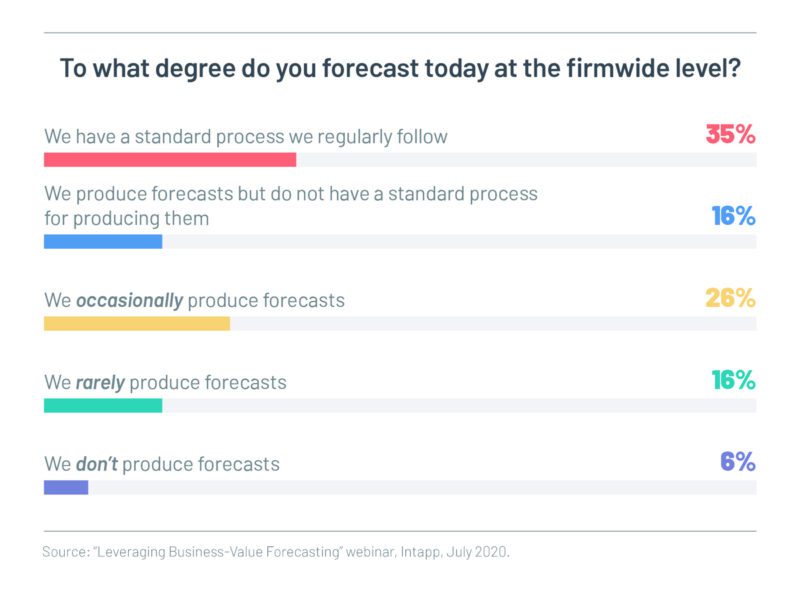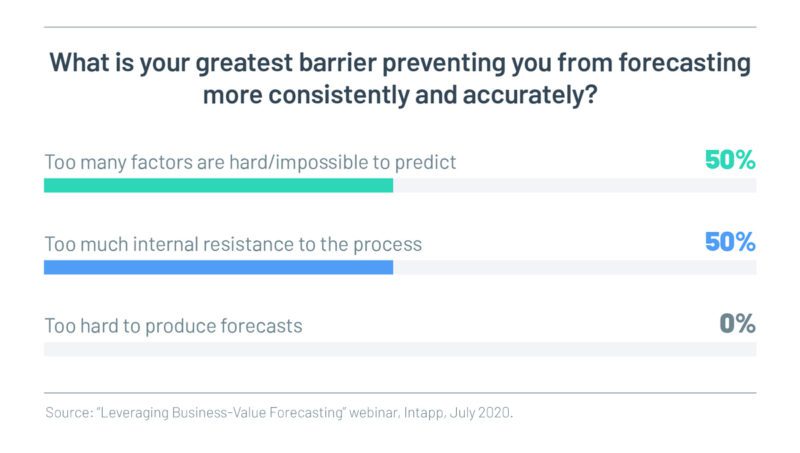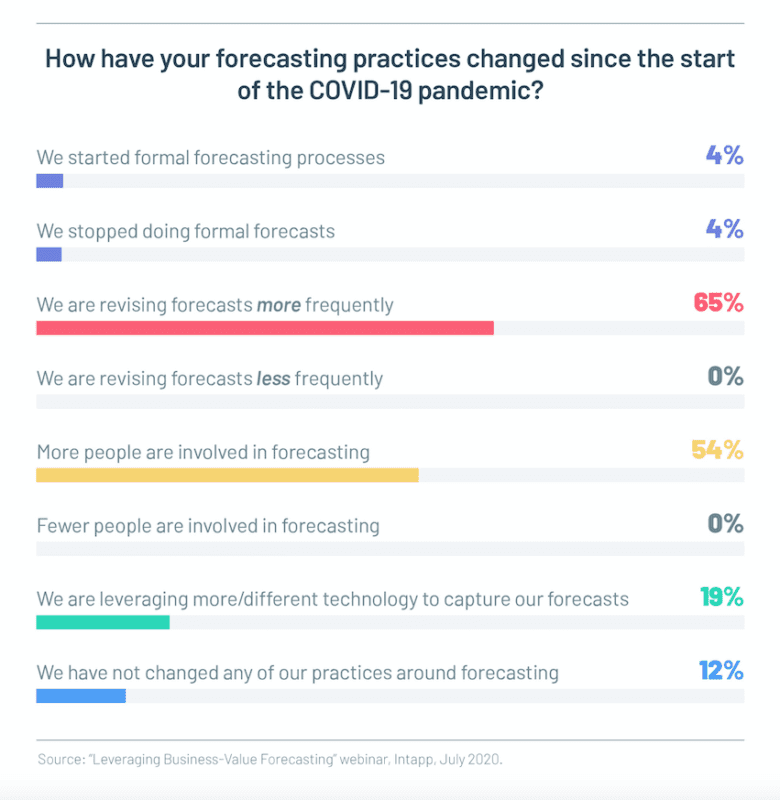What Your Peers Are Saying About Business-Value Forecasting in Professional Services Firms
Business-value forecasting can help firm leaders predict upcoming obstacles, set ambitious goals, and adequately measure success. It allows firm leaders to prepare for the uncertainties of the future — an asset that has become ever more crucial since the start of the COVID-19 pandemic. Why, then, aren’t more professional services firms taking advantage of this practice?
During a recent webinar, Intapp Chief Product Officer Thad Jampol and Senior Vice President of Strategic Marketing Pam Smith welcomed Toby Brown, Chief Practice Management Officer at Perkins Coie, to discuss how professional services firms can further incorporate forecasting into their own work culture.
When polled, about a third of webinar attendees responded that their firms regularly follow a standard process to produce forecasts. The other two-thirds, however, responded that their firms rarely or never produce forecasts.

When the hosts polled attendees to explain their reasons for forecasting ambivalence, 100% of respondents cited either the difficulty of predicting key factors, or the presence of internal resistance.

After reviewing attendees’ responses, Brown, Jampol, and Smith agreed that formulating the right questions and predicting the right scenarios can be a challenging and daunting task. They also recognized that leaders and professionals alike resist business-value forecasting because they feel uncomfortable attempting it. “It really is the combination: [the future] is impossible to predict and the internal resistance,” said Smith.
To illustrate the level of challenges facing firms of all sorts, Jampol was candid about his team’s own evolving approach to forecasting at Intapp. “Historically, forecasting has been a little upside down,” he revealed. “What we have to do is go product by product and see how that makes sense. What did we do last year with that product? Has anything changed? Did something happen in the industry? Did the product get better? What is the state of the competitive landscape?”
There may be one silver lining in the COVID-19 pandemic: Attendees report that their firms have begun to realize the benefits of forecasting, preparing themselves for a variety of circumstances.

How can firms ensure that these newfound forecasting practices remain an integral part of the work culture?
“I would say it’s [about] creating a changed mindset,” said Brown. “People always say, ‘When are we going to get to the new normal?’ I say: ‘This is it!’ I’m glad [industry] leaders have changed their thinking.”
Jampol agreed: “I think getting to a more continuous evaluation of forecasts is going to be incredibly valuable and healthy. Firms will wonder how they survived without it.”
To learn more about the benefits of implementing business-value forecasting at your firm, register to watch the “Leveraging Business-Value Forecasting” webinar replay.